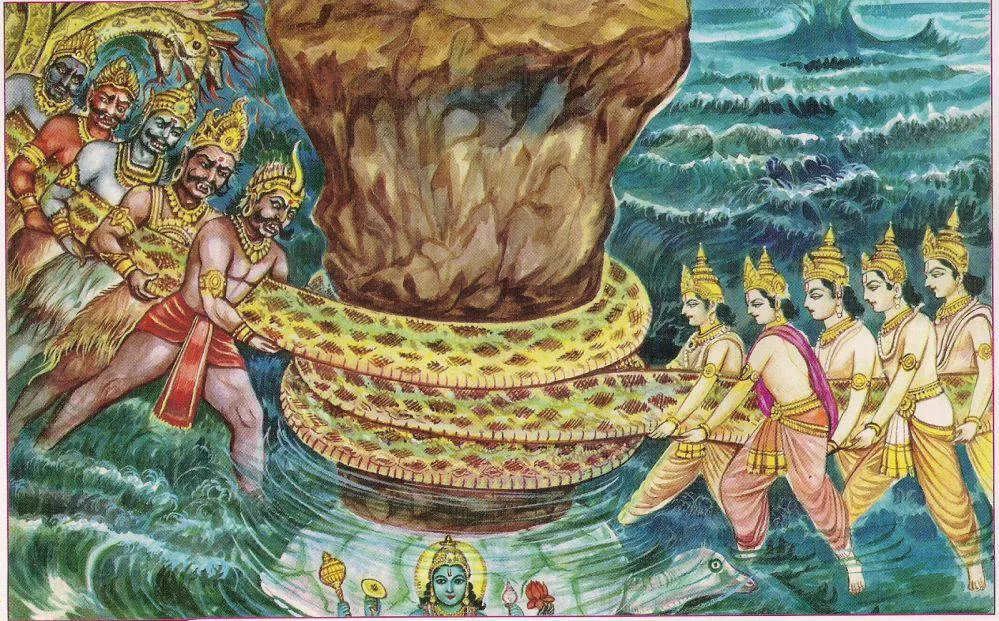About Us
Advertise With Us
RSS Feed | Content Syndication
Terms & Conditions
Privacy Policy
Contact Us
BollywoodShaadis.com © 2025, Red Hot Web Gems (I) Pvt Ltd, All Rights Reserved.

The festive flair is at its peak with Diwali right around the corner. To kick off the multi-day celebration with the perfect opening, we have Dhanteras, the day of health, wealth, and prosperity, also known as Dhanvantari Jayanti. Across the country, the day is celebrated with families visiting jewellers and markets, purchasing gold coins, silver utensils, or even a small piece of jewelry. For many households, it's not just shopping; it's a cherished tradition. And for businesses, it's easily one of the busiest and most awaited days of the year. However, did you know there is far more to Dhanteras than the glimmer of gold and silver?
Behind the festive rush lies a rich history of ancient beliefs, folktales, and cultural practices that have been passed down through generations. While some celebrate it as a day of prosperity, health, and positive energy, welcoming good fortune into your home, others, especially our ayurvedacharyas, celebrate the day as the birthday of the Lord of Ayurveda, Dhanvantari. So, what exactly is the day about? Let us understand the importance of Dhanteras through the timeless folktales passed down in Indian homes through generations.

One of the oldest tales in the book about the festival is of a Prince named Hima and his wife. According to the tale, the Prince received a prophecy which suggested that he was fated to die just four days after his wedding. However, his wife was determined to save him, no matter the cost. To distract Yama from taking her husband, she stayed awake all night, entertaining him with songs and stories. Meanwhile, she placed gold, silver, and other precious ornaments at the entrance of their room and lit many oil lamps around the house.

When Yama (Yamagraja), the God of Death, came in the form of a serpent, the light from the lamps and the shine of the metals distracted him, and he couldn't enter the room and had to wait outside, listening to the stories all night, waiting for the couple to fall asleep. However, as the wife stayed up all night, he had to leave at sunrise. This is why we light the Yamadeepdaan outside their homes on Dhanteras to protect our family and invite well-being.

Yamadeepdaan, according to old beliefs, is the tradition of lighting a lamp for Yama on Dhanteras, praying to him to help keep away untimely death and negative energy. According to an old tale from the Skanda Purana, a diya is kept on the south corner outside the house, facing southwards, which is considered the direction of Yama. Offering the diya is said to bring peace and protection from unexpected dangers. For the unversed, it is the only day when a diya is kept facing southwards.
Continue reading below

One might wonder, how did gold and silver become such an important part of this day? Some other folktales also link Dhanteras to the Samudra Manthan or the churning of the cosmic ocean. According to several reports, legends say that on this day, Goddess Lakshmi, the goddess of wealth and prosperity, appeared from the ocean, marking the start of the festival of Diwali. Her arrival is considered very lucky, and buying gold, silver, and brass is seen as a way to invite wealth and prosperity into our homes.

For the ancient practitioners of Ayurveda, the day carries a special meaning as well, as they believe that it was the day when Lord Dhanvantari was born from the Samudra Manthan with a pot of amrit (the nectar of immortality) and all the sacred texts that gave the world Ayurveda. That's why Dhanteras is not just about wealth but also a day to celebrate health and well-being. In 2016, the Ministry of AYUSH declared that the day would be celebrated in India as National Ayurveda Day.

Practitioners around the country pay homage to the ancient scriptures and the Lord who brought the principles of Ayurveda into the world. Even people at home pay their respect to Lord Dhanvantri, thanking him for good health, well-being, and freedom from illness. Lighting the diya as a symbol of a request to Yama to protect them from untimely death.

While purchasing gold and silver became the material symbols of the festival, Lord Dhanvantari gives it meaning beyond material value. Over time, this act became symbolic, representing not just wealth, but also safety, blessings, and good luck. Be it a silver coin, a new utensil, or a piece of jewelry, the idea remains the same: to bring something positive and prosperous into the home, welcoming the festive season with good energy.

At the end of the day, the celebration is a symbol of unity, positivity, protection, and devotion. Dhanteras is deeply rooted in traditional beliefs, cultural practices, and popular legends, adding a beautiful yet profound layer to the sentiments of every individual.

What are your thoughts on Dhanteras, and what stories have you previously heard? Let us know.
Next Read: What Was The Reason Of Archana Kavi's Divorce From First Husband, Standup Comedian, Abish Mathew?
advertisement
advertisement
advertisement
